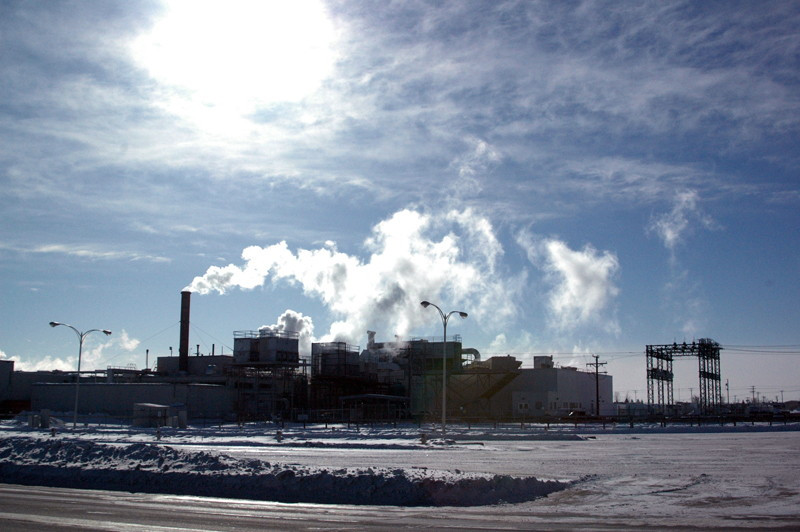Hog industry continues to damage Manitoba’s environment, experts say
Manitoba’s hog industry is inherently destructive to the environment, say experts, and the return of small-scale, mixed farming is absolutely needed to combat the influence of massive industrial pig operations in the province.
“You can’t raise animals in factories and be environmentally benign,” said Joe Dolecki, professor of environmental economics at Brandon University.
Dolecki made several submissions to the Clean Environment Commission (CEC) in 2007, when the arms-length provincial agency was investigating the environmental impacts of the industry.
“In industrial agriculture you have so much waste … that it is impossible … not to end up polluting,” he said, adding that there are two key sides of the hog industry; production and slaughter.
During production, pigs are raised and housed in barns, requiring large quantities of water to flush out manure.
The liquid manure generated from this process, which is rich in nitrogen and phosphorous, is stored away and pumped on to fields as fertilizer.
The problem, however, is that the crop can only absorb a limited amount of the nutrients within liquid manure and any excess manure is extremely costly to transport elsewhere.
Because industrial operations produce thousands of pigs, they pump more nitrogen and phosphorous on to the field than the crop can possibly absorb and the excess nutrients run off into water bodies or contaminate ground water.
“Elevated levels of nitrogen in water sources have been associated with … miscarriage and stomach cancer,” the CEC wrote in their 2007 report, “Environmental sustainability and Hog production in Manitoba”.
While phosphorous does not directly threaten the health of humans and animals, it can adversely affect freshwater ecosystems, the report added.
Eva Pip, a biology professor and aquatic toxicologist at the University of Winnipeg, pointed to phosphorous run-off as a main contributor to the algal bloom problem in Lake Winnipeg.
“Our Lake Winnipeg problems arise because of the intensiveness of these corporate farms,” she said, adding that one hog produces four times as much nitrogen and phosphorous as a human being.
“If you have 10,000, 20,000 or 30,000 hogs just in one operation, that’s all completely raw, untreated waste … that’s the equivalent of a small city.”
In traditional agriculture, pigs are only one aspect of a mixed farming operation, meaning that excess manure is easily recycled back on to the field without excess, Pip added.
“ In industrial agriculture you have so much waste … that it is impossible … not to end up polluting.
Joe Dolecki, professor of environmental economics, Brandon University
Industry monopolization
According to the CEC report, the number of hog farms decreased drastically between 1986 and 2006. However, the average number of hogs per farm increased from under 500 to over 2,500, demonstrating the decreased importance of small farms.
As of 2006, just 244 of nearly 1,200 hog farms produced 78 per cent of all the pigs in the province.
Three large hog-production companies, namely Elite Swine, Hy-Tek and Puratone, controlled 40 per cent of all pregnant hogs (or sows) in Manitoba.
“What we have now is huge, corporate factory barns where you have thousands and thousands of animals … that generates an enormous amount of waste,” said Pip, emphasizing how a series of small farms could recycle waste through a sustainable cycle.
Between 2000 and 2007, hog production in Manitoba nearly doubled, going from 4.8 million to 8.8 million.
To give the CEC time to file their report, the Manitoba government halted the expansion of the hog industry throughout the province in 2006.
That moratorium was retained in 2008 only for certain sensitive areas, including southeastern Manitoba, the Interlake and the Red River Valley.
“Protection of our waterways and sensitive ecological areas is in the interest of all Manitobans,” said cabinet press secretary Rachel Morgan in an e-mail.
The hog industry can still expand in southwestern Manitoba.
Dolecki of Brandon University believes that the province has simply moved its environmental problems elsewhere.
“(It’s) nonsensical,” he said.
According to Morgan, however, the government has used the moratorium to stop the problem from getting worse and has tightened up regulation considerable since the 2007 CEC report.
Published in Volume 65, Number 20 of The Uniter (February 24, 2011)







